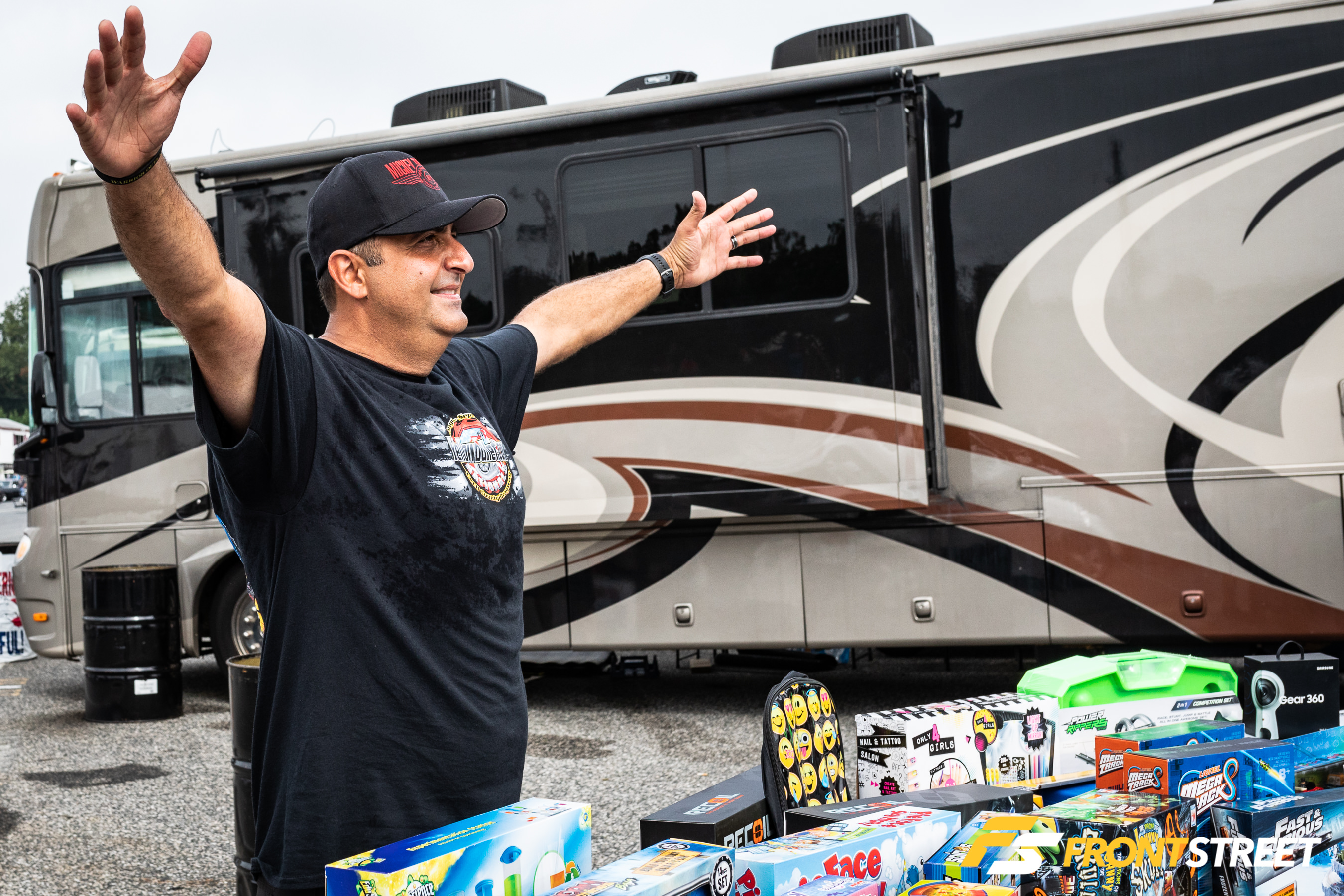Where The Weak Are Killed And Eaten is a tagline that might raise eyebrows everywhere but in the car community; it’s an apt description of exactly what happens in all forms of motorsports. It’s the tag for Yellowbullet.com, a car guy’s car guy website that’s been around since the early 2000s. The site, started by Monty Mikho after he was banned from several other racing websites for speaking his mind, quickly grew to be a force in the racing world. With over 100,000 members, 20 million posts—and counting—there’s no doubt that the no-holds-barred concept works, at least in this case. Ten years ago, Mikho turned his attention to the concept of promoting an event, and the YellowBullet Nationals was born of a desire to gather up the site’s members, along with the country’s premier drag racers, and bring everyone together for a weekend of killer action on the 1320.

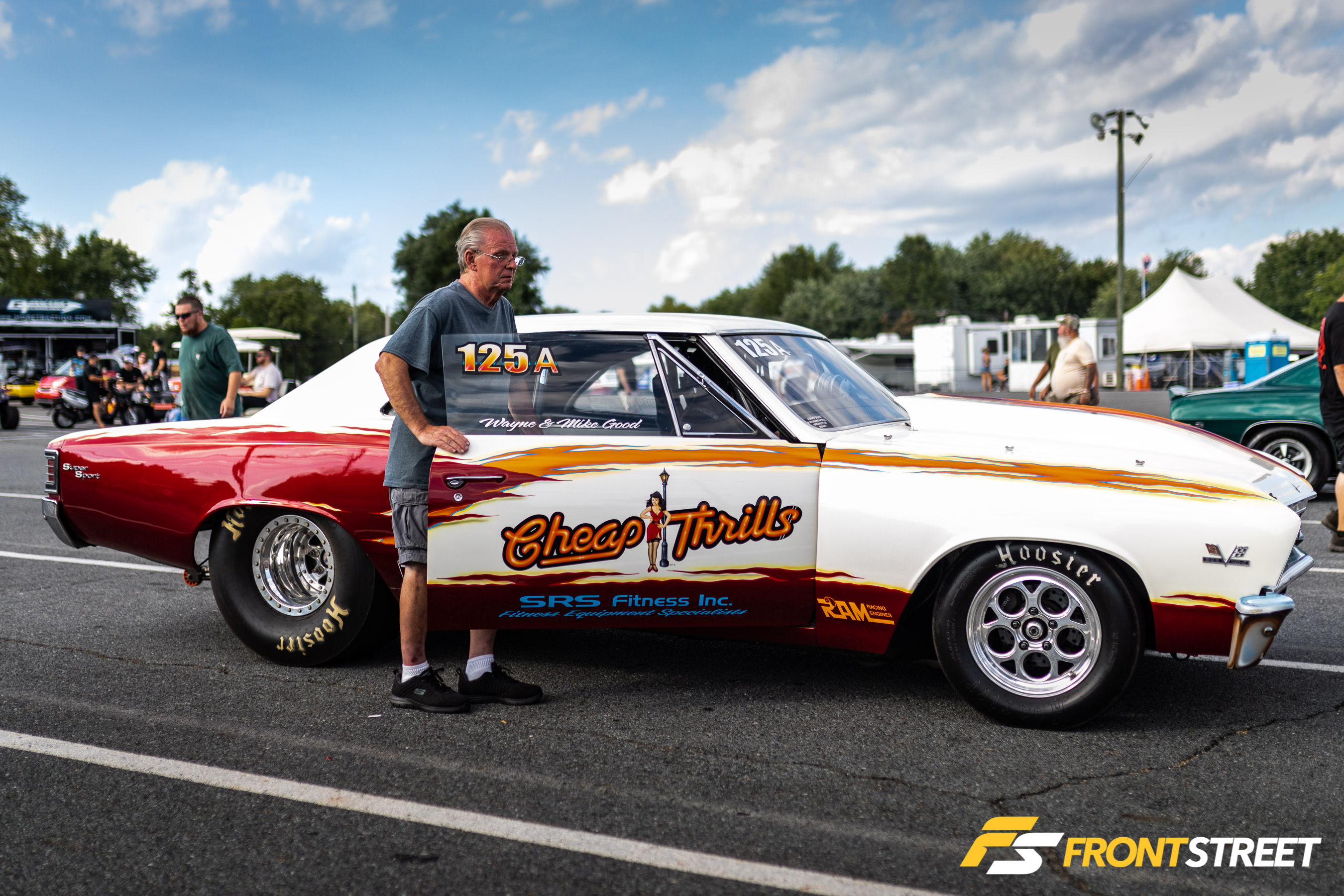

I haven’t been to every YellowBullet Nationals, but I’ve been to at least the last five in a row, and I can tell you that it’s a racing weekend like no other. The mixture of Pro Mod, Outlaw 10.5—old-school Outlaw 10.5, where some of the racers actually run on the true slick rather than the 315 radial tire—along with X275, Ultra Street, and several bracket classes brings a nice mixture of all types of racers to Cecil County Dragway in Maryland.
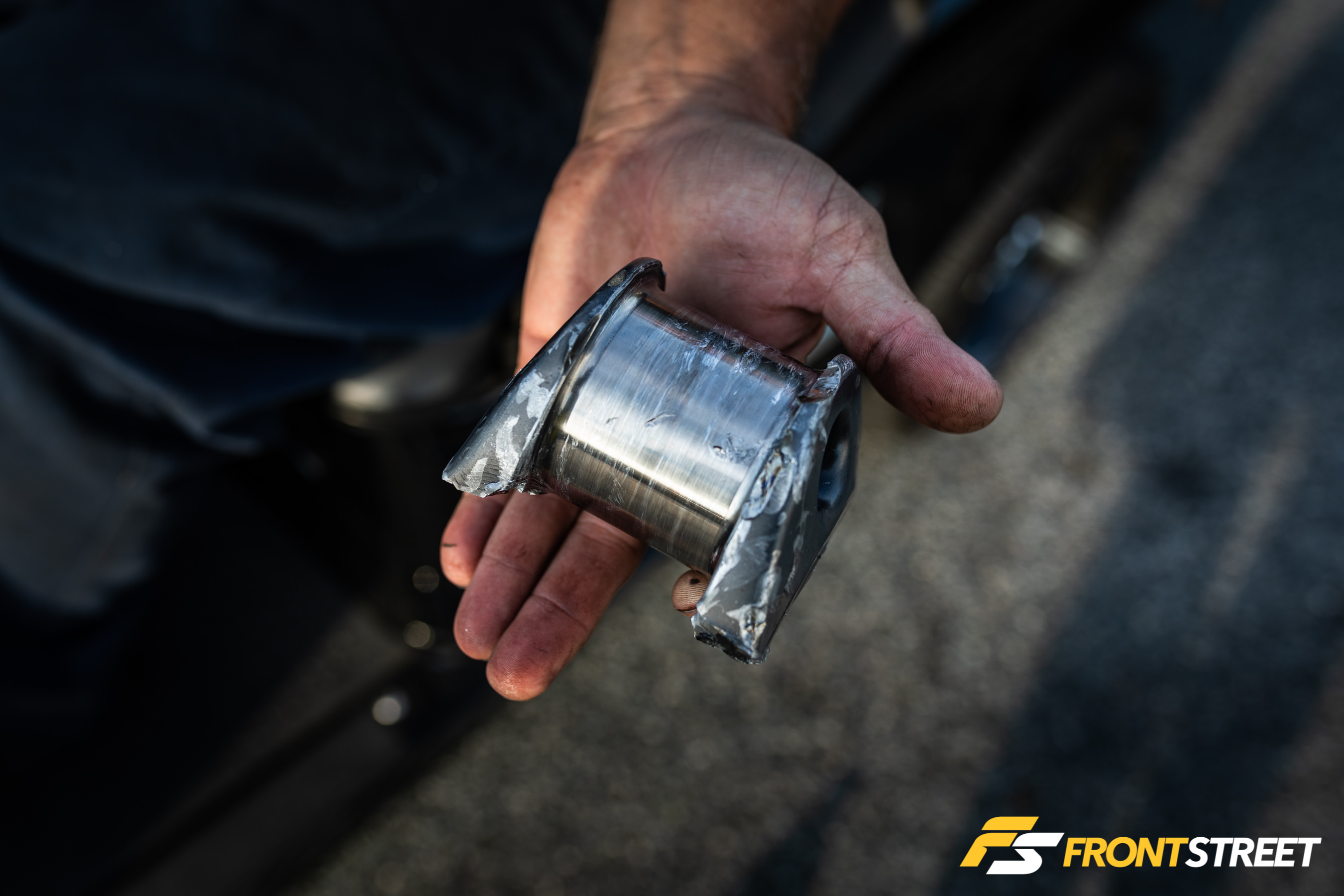


The racing action is always exciting, but one thing that sticks out in my mind is how it’s become an event to attend. You see, Monty had the foresight to plan the initial YB Nationals over Labor Day weekend, and all these years later, it’s turned into the kickoff to the fall drag racing season. Nothing good happens in the summer with any of these classes, as the weather is too hot and muggy for anyone to be setting any records, and sizzling track surface temperatures preclude racers in every class from going all-out. Instead, summertime racing action consists of what I’d consider maintenance of the status quo. Nobody gets aggressive for fear of showing their hand. Let’s say a racer goes out and crushes a record in July… well, he can count on getting a whole bunch of lead to slow him down, no matter what class he races in. So smart drag racers don’t put forth that effort in the summertime. At least not that I can see.



Once Labor Day rolls around, the fall racing season starts to take shape, with YB acting as what I’d consider the season opener of the Grand Slam of outlaw-style racing. Just a few weeks later comes the Shakedown at VMP (I’ll be there) then shortly after, Duck X Productions’ No Mercy (I’ll be there, too), and several weeks after that, the season closes out with the Street Car Super Nationals (I’ll also be there).




I have to digress from the heads-up racing talk for a moment and discuss one of the things that has always stuck out to me about the YellowBullet race: the fierce competition in the 8.50 Index class. I know, you’re wondering why I’m starting off by talking about this class, and it’s because of how tight the racing action is among these competitors.
I’m a numbers nerd, so bear with me here. With a simple goal (yeah, right… you’ll see in a moment) of running as close to the 8.50-second mark as possible in the quarter-mile, it invites racers across the board to take their shot. How does a qualified field of 32 racers with a bump spot (#32) of 8.544-seconds sound to you? Yes—that’s .044-seconds separating the top 32 qualifiers. You have to go all the way down to the 12th qualifier on the list (Jim Dayotas’ 8.510) to find a full hundredth spread from the number-one qualifier, Brian Marko and his 8.500 shot.




It gets better. You have to go to number 50 on the qualifying sheets, all the way down to Jack Weaver’s 8.812-second pass to have an elapsed time spread from the number one qualifier that is long enough to equal the blink of an eye (about .3-second). 50 cars, all competing at a level where the separation from one to 50 in qualifying is the length of time it takes to blink your eyes. Pro Mod is awesome; so is X275, Outlaw 10.5 and Ultra Street, from a pure, put-the-horsepower-to-the-ground and let the best man win concept. But when it comes to knowing your machine, being consistent on the starting line, and generally being a bad-ass driver… my opinion is that 8.50 Index stole the show at the 2019 YellowBullet Nationals. At the end of the day on Sunday, it came down to Dan Purdy in his Camaro against Michael Daniele’s Mustang, with Purdy coming out on top after five rounds of competition.



There were 21 cars vying to make the 16-car qualified field in Pro Mod, but the real story during qualifying was the back-and-forth between Jay Cox in the Pumpkin Camaro, and CCD owner Jim Halsey, in his Shark Camaro. Cox relies on a Charlie Buck powerplant against Halsey’s Gene Fulton power; both have Switzer Dynamics nitrous systems under the hood. Entering this event, Halsey held the record in his own house. By the time qualifying was complete, Cox had eaten him up, resetting the track record and qualifying at the top of the ladder with a 3.632 at 208.33 mph to Halsey’s 3.647-second, 207.72 mph effort. Not only that, Cox went two-for-two in the match races between the pair for nitrous supremacy.
Melanie Salemi, Dean Marinis, and Mike Achenbach rounded out the top five, but on Sunday, none of these racers mentioned could capitalize on their qualifying positions.

Cox, Halsey, Salemi, and Marinis all moved into the second round, but so did teammates Kevin McCurdy and Tyler Hard of Hard Racing in their ProCharger-boosted, Tim McAmis-built ’68 Camaros. After the next round, only Marinis stood alive among the top four qualifiers, and he went down in the semifinals to McCurdy. Meanwhile, Hard made it to the final round by taking out Halsey and former track champ Chuck Ulsch, who exited on a heartbreaking -.003 redlight in the semifinal. Despite all of the noise made by the nitrous racers, it came down to Hard vs. McCurdy for the big $20,000 payday. McCurdy left hard on Hard, earning a holeshot of nearly a tenth and a half, but faltered before the stripe as Hard passed him and captured the $20,000 win in a great showing for the Pennsylvania-based team.

The reason that this is relevant is that up until last year, centrifugal superchargers weren’t really a part of the conversation in Pro Mod. The class was based around the three traditional power-adders: nitrous injection, roots-style superchargers, and turbochargers. But the advent of the newest generation of centrifugal compressors means they can be competitive with these other combinations, and Hard’s win here at YellowBullet is just one of several impressive wins the centrifugal-boosted racers have captured in 2019.

Another killer accomplishment came from Steve Beaston, Jr. in his Camaro, which reset the Ultra Street class record during qualifying, becoming the first car into the 4.50 zone with a 4.591 at 153.7 mph.
Beaston’s big-block Camaro is a beautiful machine that you will see featured right here on Front Street, as I’ll be heading to his shop to capture it in its element in the next couple of weeks.

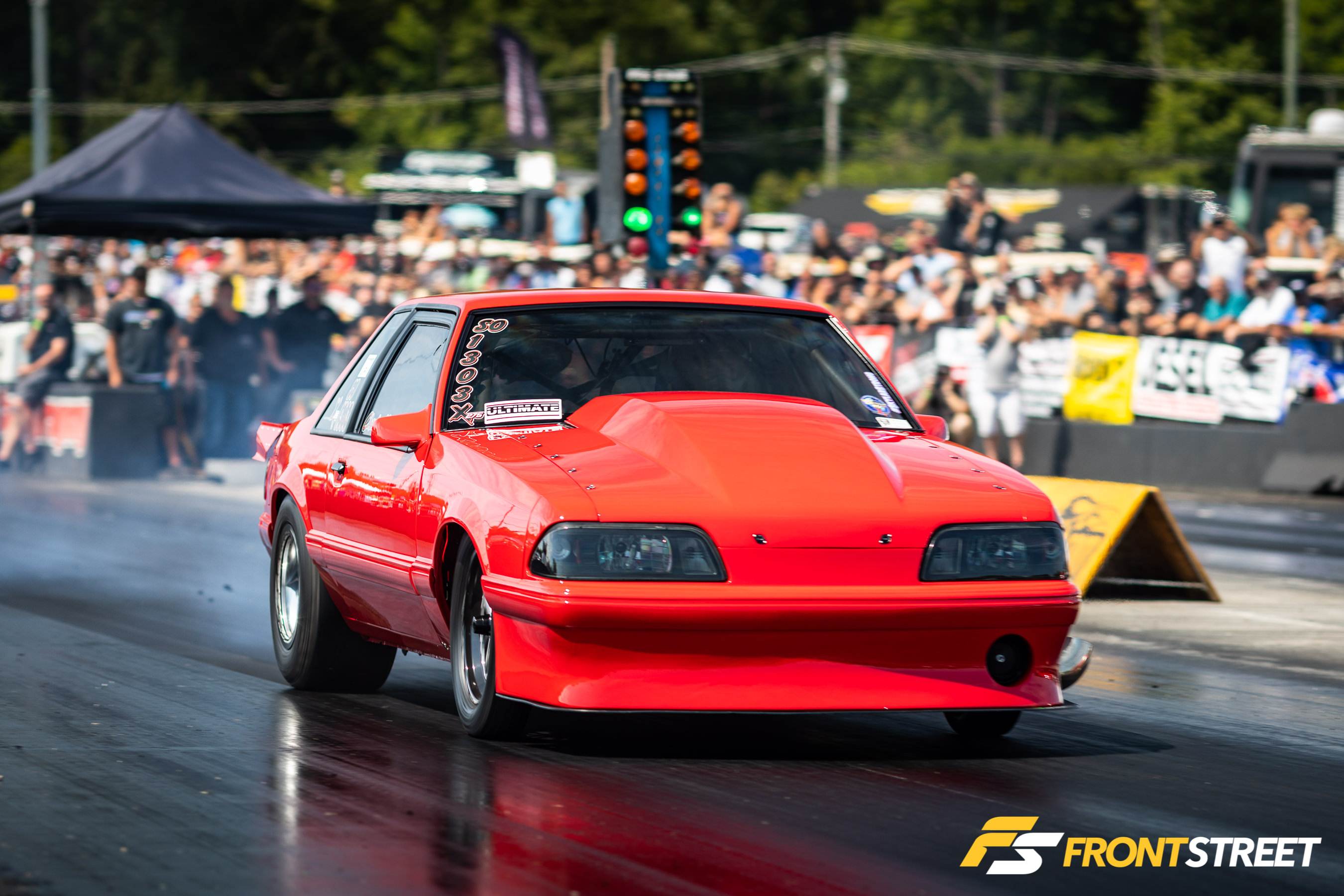
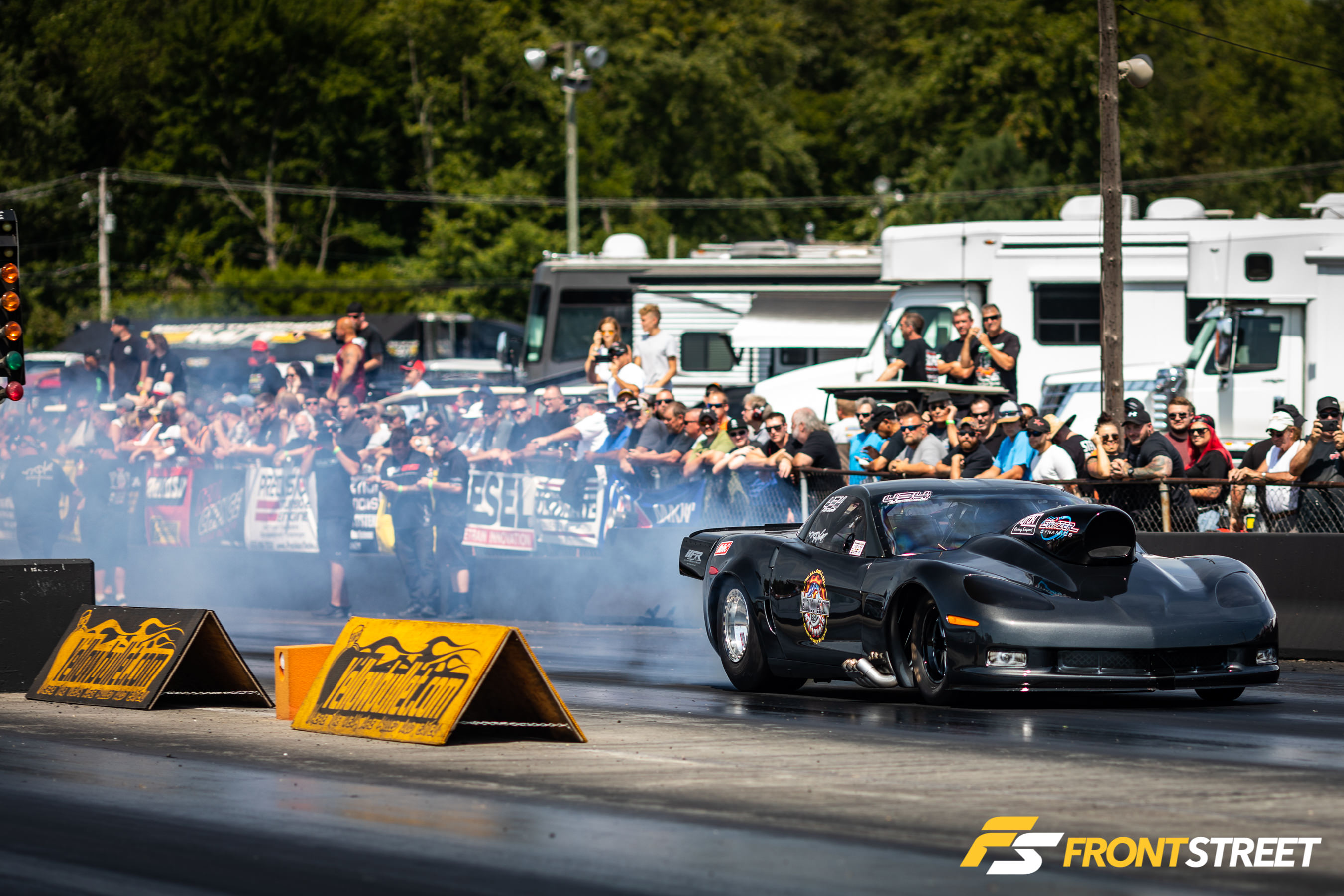

Other class winners include Charles Hull (X275), Mo Hall (Outlaw 10.5), Mike Newman (Top Sportsman), John Albrecht Jr. (Ultra Street), James Smith (Warriors Outlaw), Chris Yeznach (10.00 Index), Jim Saiber (Super Pro Street), and Steven McMillan in Pro Dial.
And now, your bonus content: It’s rare to have the opportunity to talk with Monty Mikho when he’s not busy, so when he graciously offered his time for a quick phone interview to discuss the race, I thought it relevant to include the contents of that phone call here. Ten years in, he’s learned some tricks with respect to promoting events, and how to make the Yellow Bullet Nationals a more engaging experience for the racer and fan alike.
Front Street: How difficult is it to hold not only one event, but to pull it off ten years in a row?
Monty Mikho: It really is a full-time job, trying to promote, find sponsors, talk to the media outlets, and get things rolling and organized. Just this year, one of the guys I work with said he didn’t know how I do this thing—he had just planned a birthday party with 25 people, and we have thousands upon thousands of people that come to the YellowBullet Nationals. That makes me realize that it’s a huge, huge undertaking that wears me out through the year. I won’t sit here and lie to you; it takes a toll on me throughout the year, to make sure everything’s good. All that planning and all of those struggles, getting the sponsors for the race, collecting money, setting up purses, the nerve-wracking part is that you have no idea what that weekend’s going to bring. Is it going to be good weather, or is it going to rain all weekend? Are there competing events in the area? Are people going to show up? Will the racers be upset, or happy? Is anyone going to get hurt at the event? There’s a lot that goes into it, and it takes a lot of energy throughout the year to put on the race. I don’t have a staff per se—I do this all on my own, although there are a lot of people that help out, at the end of the day, I’m the one that has to communicate with Jim Halsey, the sponsors, and the racers. It’s a huge undertaking.

FS: Given all of those challenges, why do you keep hosting the race? You have a day job.
MM: [long pause] Right now I’m still on a high, and I thought the event was a huge success. It was organized and things ran smoother this year, I believe, than any other year. I’m really excited and my energy level is really high. You media guys influence that as well—you’re bombarding social media with content, and I really feel that we’ve succeeded this year better than any other year. I’m on a super high. Fast forward here in three to four months, when the hard work starts coming in and the hype in me comes down a little bit, and my business starts taking a toll on myself, it’s hard for me to look forward going into the event thinking that I’m going to have another one. Even walking into this one, I thought it might be our last one. I didn’t know what the event would look like and how we would end up. In the last two years, we took a pretty big loss because of full-day rainouts; that’s a hard blow putting a lot of money into this deal only to go negative at the end of the event. It took us ten years to get here, but I think we’ve finally found a good balance between spectator count, car counts, and finishing the event at a reasonable time. Jim Halsey gave me rough numbers—we had around 390 cars this year. That was absolutely awesome from my side. We had 660 cars one year. We’ve learned that as you get a lot of racers it’s really flattering, but at the end of the day, you have to finish the event and make everyone happy, and keeping racers that late at night probably upsets them. I think this year we found that happy balance of roughly 400 cars, I think we can have wicked events like we had this year in the years ahead of us.

FS: That to me says there’s going to be an eleventh YellowBullet Nationals.
MM: Going into this year’s event I didn’t know how it was going to be. I didn’t book hotels for next year. By Friday everything was rolling so smoothly I went ahead and booked our hotels for next year. We’ll definitely do it and try to make it even better. I think we’ve got the tuneup pretty good and just need to pick away at it a little bit more—overall I think we’ll have the same format we had this year.
FS: If you had to sum up the first ten years of the YellowBullet Nationals, what would you say?
MM: I’m going to say it’s been a pretty awesome journey. Looking back it’s always a little bit easier than living at that time. We’ve had a lot of stressful years. I really looked back this year, sitting on the couch with my wife. We’ve made a lot of people happy. There are a lot of smiles. Everyone’s gone home safe at the end of the day, and we’ve had successful events for ten years straight. That says something about all of the hard work we’ve put into the event—it’s a sense of accomplishment. I’m thankful for the media, all of our sponsors, Jim Halsey, my wife, my brother, and all of the people who really help us. I’m the face, but at the end of the day there are a lot of people make this possible—without them, the event would be impossible to do.
If I never do another one, I’d feel that sense of pride that I did do something good for the drag racing community. It makes my heart smile to know that.
